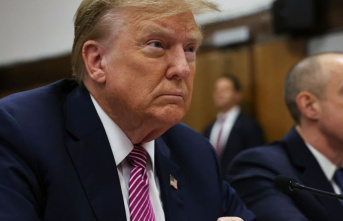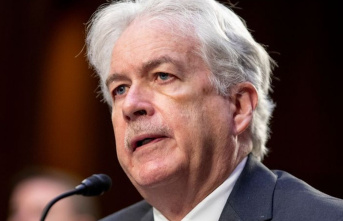There is also a film of the scene. At first everything looks like everyday life, some day in the Vietnam War, on the streets of Saigon. A slight man in shorts and a plaid shirt, barefoot, his hands cuffed behind his back. He is led through the city by soldiers. Another man enters the picture from the right. He waves a revolver, makes room for himself. He then stands next to the others, stretches out his right arm and shoots him in the head. Simply that way.
This is the moment when US photographer Eddie Adams clicks the shutter button. In this way, exactly 55 years ago, on February 1, 1968, one of the most famous images in war photography was taken - a man in civilian clothes being shot by a military man. One can also say: executed. It is a brutal image and also a deeply human one. You can hardly get it out of your head. Many believe it changed the course of the war.
The man in the plaid shirt was called Nguyen Van Lem. He was in his mid-30s, married, a guerrilla of the communist Vietcong, who fought against South Vietnam and thus also against the USA in the divided country under Ho Chi Minh. Both sides had actually agreed on a cease-fire on Vietnam's New Year's Day Tet, February 1st. But despite all the promises, the day before, Ho Chi Minh launched a large-scale push that went down in history as the Tet Offensive.
There was also fierce fighting in Saigon. Lem was right in the middle. It is said that he was a member of a death squad that was targeting South Vietnamese police officers and their families, although this is not exactly known to this day. He was allegedly arrested that morning near a mass grave containing 34 bodies. Australian cameraman Neil Davis later reported that Lem also murdered friends of Saigon's police chief Nguyen Ngoc Loan, including godchildren of his.
Loan was the man with the gun. A 37-year-old general, former pilot, college friend of South Vietnam's Prime Minister. He later claimed that Lem killed the family of one of his officers. That fits the Australian's portrayal. One will probably never find out whether it is true. Anyway, the General squeezed out his .38 Smith
The scene was followed by a handful of war reporters. Some say Loan would never have shot the Viet Cong otherwise. The recordings that the cameraman Vo Suu made for the American television channel NBC can now be viewed by anyone on YouTube. There, Lem can be seen collapsing, sinking to the right onto the road, and then blood oozing from his head. Loan holsters the pistol and turns away.
Much more impact than the television images, however, was the photograph Adams took. The American, then 34 years old, worked for the Associated Press (AP) news agency, an experienced man. He thought he was only photographing an interrogation on the open street. "It was common in those days to hold a gun to the temple of a prisoner," Adams later said. It turned out differently.
In the days that followed, all major US newspapers and many newspapers in the rest of the world had the photo on the front page. You look at the general, his arm, the pistol and at some point also in the face of Nguyen Van Lem, who is about to lose his life. The left eye is still open. Many saw the image as confirmation that the US was supporting the wrong people in Vietnam. American politics became increasingly defensive.
The picture became press photo of the year. Adams received the Pulitzer Prize, America's most important award for journalism. Time magazine included it in their list of the 100 most important photos of all time. Nevertheless, Adams later repeatedly said that he regretted the recording. The picture was taken out of context, just a "half-truth". "The general killed the Vietcong. And I killed the general with my camera."
And sometimes he also asked the question: "What would you have done if you had been the general? At that time and in this place? On this hot day? And you would have caught this supposed villain after he had one, two or three American gunned down soldiers?" The question occupied him until his death in 2004.
Loan also became a celebrity. The cameraman at the time reported coming up to the reporters right after the shooting and saying, "These guys are killing a lot of our people. I think Buddha forgive me." Pictures taken a little later show him drinking beer, smoking, laughing. Three months later he was seriously wounded. His right leg had to be amputated.
After US troops left Saigon in 1975, the general fled to the United States with his family. There were calls for him to be tried as a war criminal, but that never came about. In the US state of Virginia he opened a pizzeria, which he had to close again when his past became known. He died of cancer in 1998 at the age of 67.
In Saigon, which is now called Ho Chi Minh City, hardly anything reminds you of the scene from back then. On the street where it happened, the Ly Thai To in the 10th district, the mopeds are now rolling side by side. There is no form of commemoration here. In the city's War Museum, Adams' photo is tucked away in a display case - just one of many showing how death swept across the country.











